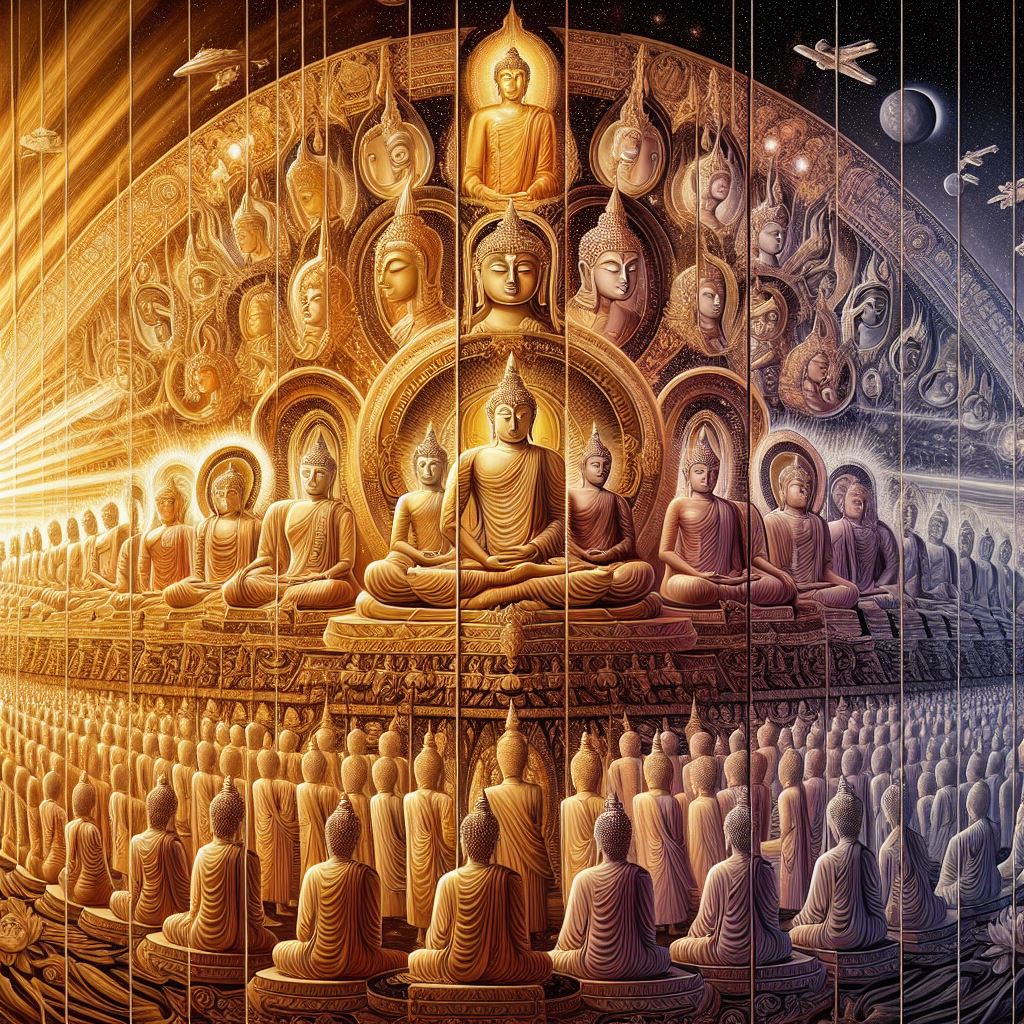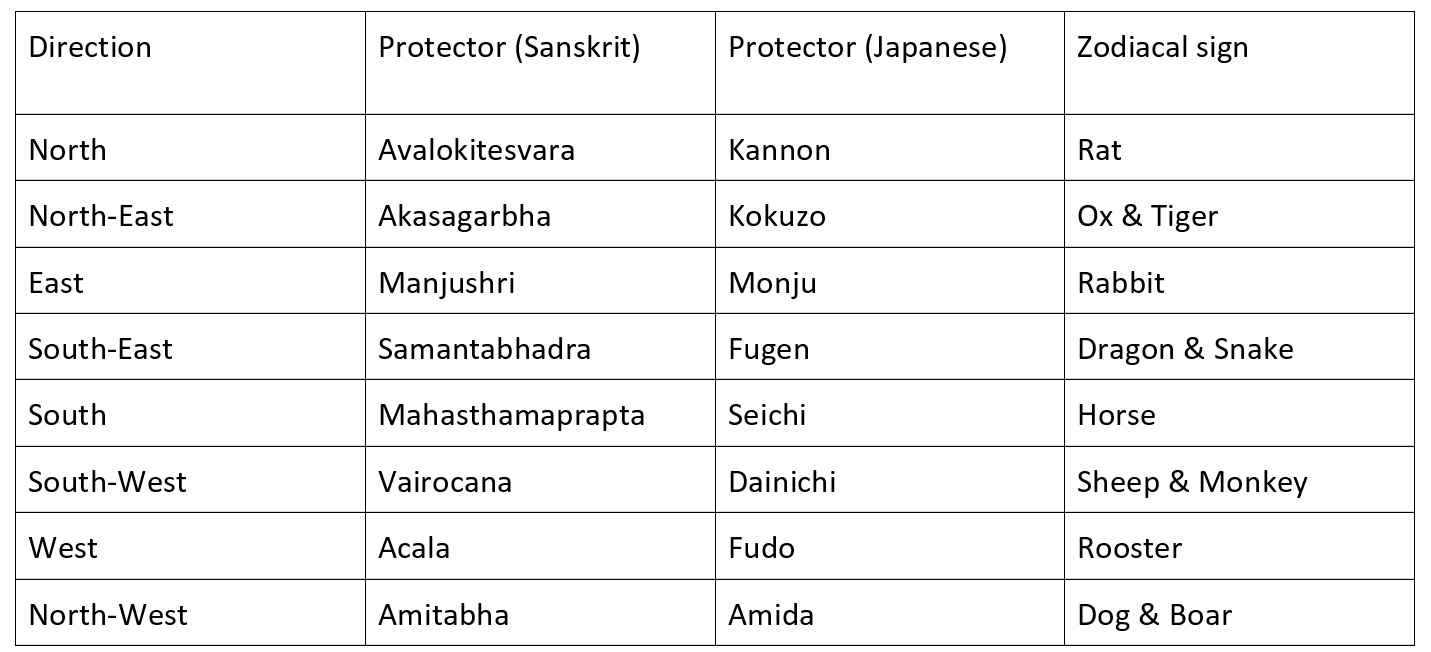
Martin Goodson
The Buddhas of the Ten Directions
The Way of Devotion
The interconnected nature of consciousness means that we can have a more fluid relationship with reality, even calling on it for help if we need it.
 ©
© Copilot
ALL THE BUDDHAS OF THE TEN DIRECTIONS AND THE THREE REALMS
ALL THE NOBLE BODHISATTVA-MAHASATTVAS
THE GREAT WISDOM GONE BEYOND!
(EKO: A dedication made prior to chanting)
Over the course of a thousand years, the Buddha went from indicating one man to doing so for a vast multiplicity of beings peopling the cosmos.
Even in the Buddha's own time, and through his own words, he made it clear that he was not unique but one of a long, long lineage stretching backwards and forwards in time. The advent of developed, or Mahayana, Buddhism saw the addition of multiple worlds each filled with Buddhas and their attendant Bodhisattvas.
Moving from 'one' to 'many' is to move from the general to the particular, and this multiplicity meant that each Buddha or Bodhisattva began to accumulate areas of patronage as well as iconographic detail, making each one recognisable.
The way to this multiplicity, from one Buddha to many, is through the development of the notion that the Buddha had different bodies, a doctrine formally put forward by the Indian Yogacara school of Buddhism. The physical Buddha was called the nirmanakaya - this was a manifestation body in the physical world that could preach the Buddhadharma for the benefit of human beings. But the real, or 'true', body of the Buddha, dharmakaya, was conceived as being transcendent or 'cosmic' and was the ground of all being from which and to which all phenomena arise and return. This 'basis' was the true body of the Buddha and is synonymous with the Dharma in the most profound understanding of the term. So that gives us two bodies. This understanding predated the Yogacara innovation which introduced a third body known as the sambhogakaya; this is known as the 'Enjoyment Body'. This can perhaps be understood more as a bliss body, a bliss that accompanies a visionary state. It was this visionary state that allowed early Mahayanists to commune with the Buddhas and Bodhisattvas who could thus continue to give teachings which would become doctrines of Mahayana philosophy and teaching.
Unlike Western philosophy, Buddhist thought rests on the assumption that everything is 'joined up’, in a continuum. The 'one in everything and everything in the one' of the Avatamsaka (Flower Garland) Sutra rests on this assumption. European thought moved over to the Cartesian dualism of a split between spirit/matter, mind/body to the point where spirit, or its modern iteration, consciousness, is allowed to exist only as the epiphenomenon of brain activity. Only very recently have Western philosophers and neuroscientists both begun to look seriously at what is now termed 'panpsychism'- the belief that in some way everything in the universe has some kind of consciousness.
Once consciousness has been freed from the confines of the skull, then it is free to extend in 'the ten directions', a euphemism for 'everywhere'. In fact, is it no longer just consciousness but the contents of consciousness that can also roam free. Mind or heart can thus be met whichever way we turn and also concepts such as 'time' are also part of the consciousness of heart and mind. The mediating bridge between the body of the Buddha on earth and the transcendent or 'cosmic' Buddha which underpins all phenomena of the 'three realms' (samsara), is now populated by visionary Buddhas and Bodhisattvas. This is the sambhogakaya, the realm of 'limitless form' wherein live the eight great protecting Buddhas and Bodhisattvas who fan out in eight directions in space. These directions form what is known as the Pure Lands of the Four Cardinal Points, plus four more in the spaces between them- NW, NE, SE & SW. Because they are both local and cosmic, they also take in the heavens and the signs of the Chinese Zodiac. What is in Heaven rules what is below on Earth, and therefore these eight protectors are allotted to protect and guide beings born under the Zodiacal sign or signs allotted to them.
Veneration of the protective Buddha or Bodhisattva lifts the heart and, like the Silk Road story of the ' Leper Sculptor', calls out to an intercessory power for help along the Way.
Perhaps, some may consider that in the Zen schools we do not rely on Buddhas and Bodhisattvas in this way, but the story of Master Gutei begs to differ. Gutei spent 10 years in veneration of the Bodhisattva of Compassion, Avalokitesvara/Guanyin/Kannon. After this time a nun came to him and challenged him to say a word of Zen. Gutei was unable to and she left. He fell into despair that after all this time he was still unable to do so. Master Tenryu also passed by and Gutei exhorted Tenryu to say a word of Zen. At this, Tenryu raised a single finger and Gutei attained his awakening. It might seem at first that the 10 years was a waste of time for Gutei but the seed that Tenryu dropped would not have sprouted so immediately had the ground not been so well prepared.
 ©
©




